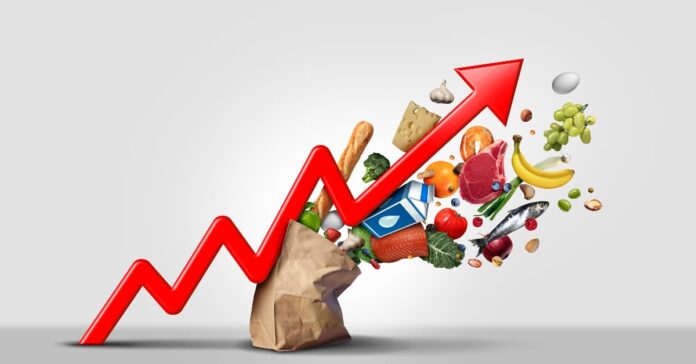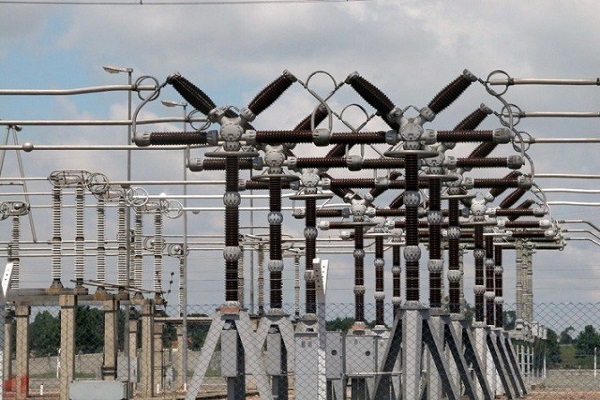The National Bureau of Statistics (NBS) reported a rise in Nigeria’s inflation. The headline inflation increased to 24.23% in March 2025.
This represents a 1.05% rise from February’s rate of 23.18%. The latest Consumer Price Index (CPI) report shows the CPI reached 117.34 in March.
“The Consumer Price Index (CPI) rose to 117.34 in March 2025 reflecting a 4.40-point increase from the preceding month.”
“In March 2025, the Headline inflation rate rose to 24.23% relative to the February 2025 headline inflation rate of 23.18%.”
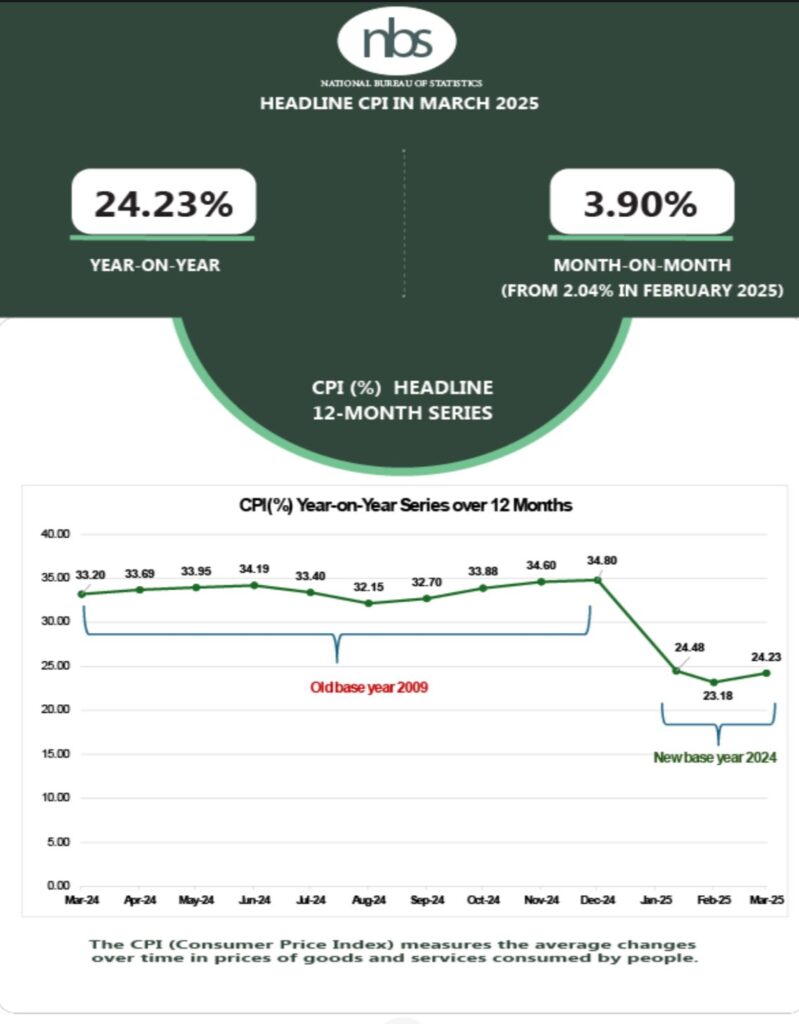
“Looking at the movement, the March 2025 Headline inflation rate showed an increase of 1.05% compared to the February 2025 Headline inflation rate.”
The report marks the first rise in the CPI since it was rebased in January 2025. This new trend may push policymakers to review their monetary policy. In February, the Central Bank’s Monetary Policy Committee paused rates at 27.50%. With this surge, a policy review is likely.
Nationwide Inflation Trends and Food Price Surge
The new inflation rate signals rising prices across many sectors. Food prices have also climbed. The year-on-year food inflation rate reached 21.79%. Price hikes in fresh ginger, yellow garri, Ofada broken rice, and honey contributed to this rise.
Food inflation was highest in Oyo at 34.41%, Kaduna at 31.14%, and Kebbi at 30.85% on a year-on-year basis. In contrast, Bayelsa recorded 9.61%, Adamawa 12.41%, and Akwa Ibom 12.60%.
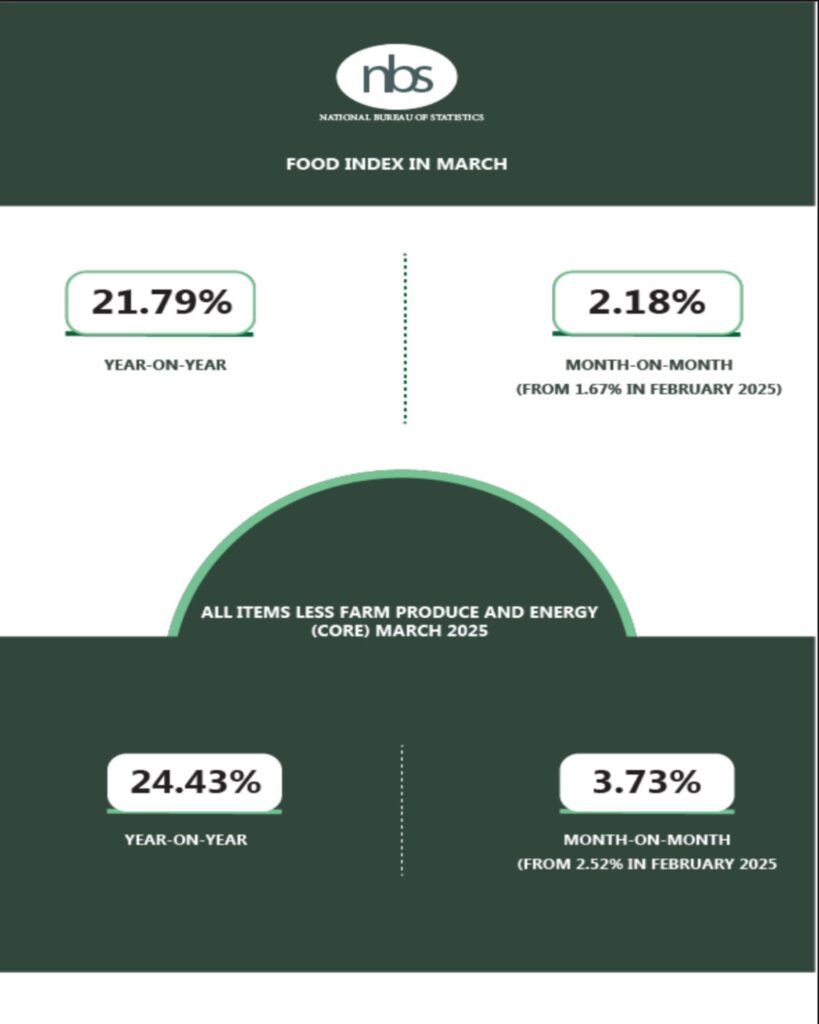
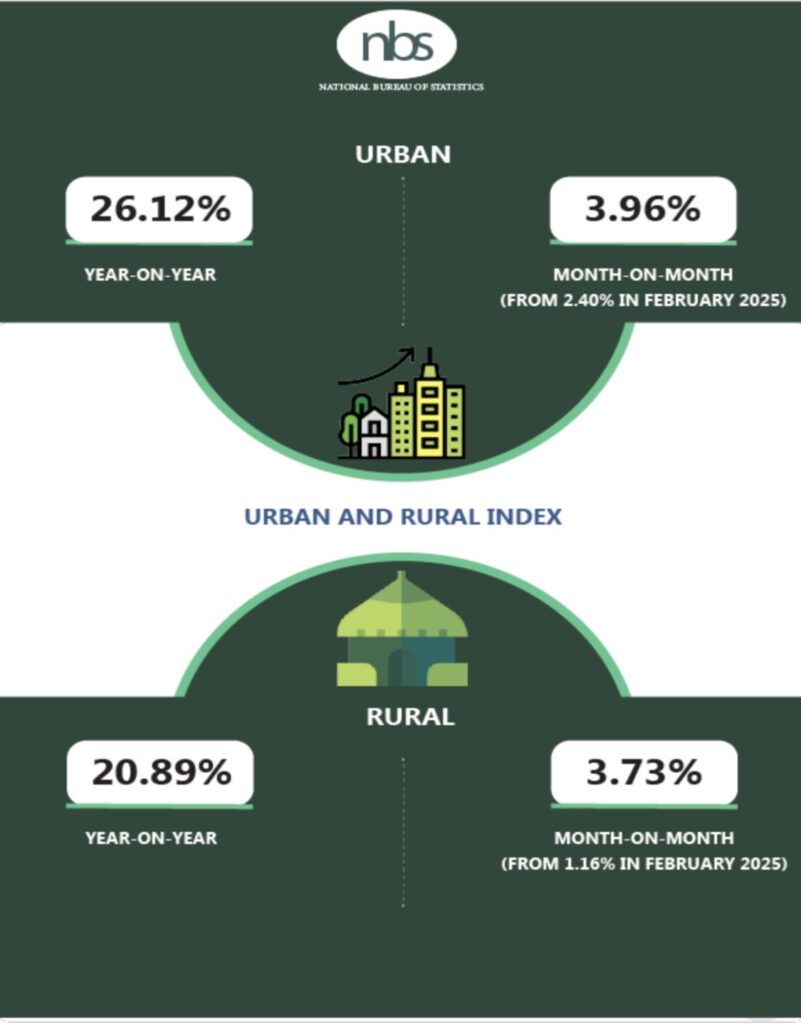
On a month-on-month basis, food inflation topped in Oyo at 19.74%, Kaduna at 17.24%, and Kebbi at 14.03%. Meanwhile, states like Sokoto, Nasarawa, and Edo saw a decline in food inflation.
The overall headline inflation on a month-on-month basis was 3.90% in March 2025, up from 2.04% in February. Consumers face higher costs as these rises affect everyday items. Rising prices squeeze household budgets. They reduce the real income of citizens during tough economic times.
Urban and Rural Price Movements
Urban areas registered a 26.12% inflation rate on a year-on-year basis. Its inflation on a month-on-month basis reached 3.96%, up by 1.56% from February’s 2.40%. Rural inflation came in lower at 20.89% YoY. On a month-on-month basis, rural inflation was 3.73%, an increase of 2.57% from February’s 1.16%.
Core inflation—which excludes farm produce and energy costs—stood at 24.43% YoY. On a month-on-month basis, core inflation increased to 3.73% from 2.52% in February, marking a 1.21% rise.
The all-items headline inflation varied by state. Kaduna recorded a high of 33.33%, Osun reached 32.08%, and Kebbi hit 30.74% YoY. Meanwhile, Akwa Ibom was at 12.81%, Bayelsa at 14.02%, and Sokoto at 14.83%.
On a month-on-month basis, Kaduna, Osun, and Oyo experienced the highest hikes at 18.85%, 16.49%, and 14.44%, respectively, while Sokoto, Nasarawa, and Kwara saw the smallest increases.
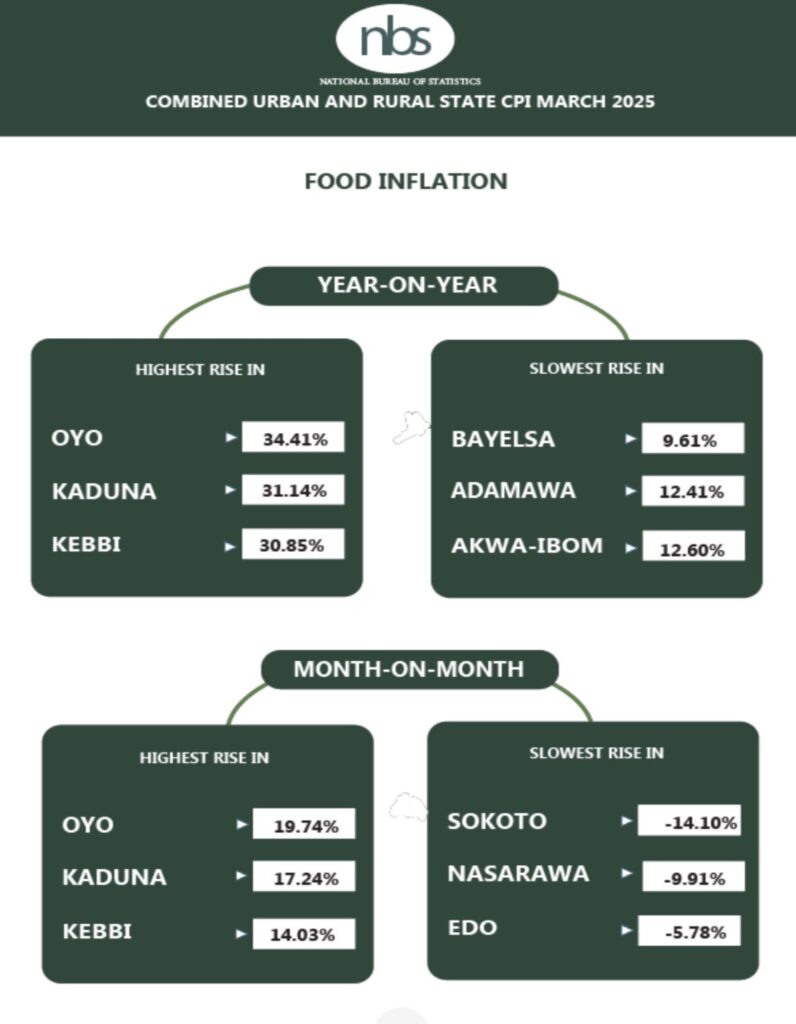
Rising inflation affects the cost of living and may push the Central Bank to adjust its monetary policy.
Rising prices on food and essentials usually reduce citizens’ purchasing power and strain household budgets.
Like 👍, Comment, share this article, and Follow us on our social media handles.

